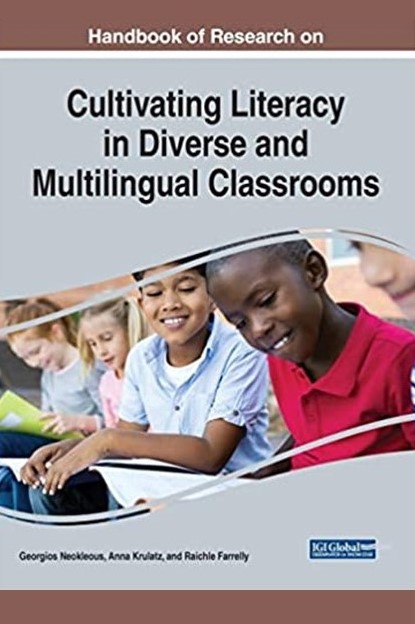- Contributors
- Editors
- Publisher
- Year
- ISBN
- Language
- Georgios Neokleous, Anna Krulatz & Raichle Farrelly
- IGI Global
- 2020
- 9781799827221
- English
Literacy has traditionally been associated with the linguistic and functional ability to read and write. Although literacy, as a fundamental issue in education, has received abundant attention in the last few decades, most publications to date have focused on monolingual classrooms. Language teacher educators have a responsibility to prepare teachers to be culturally responsive and flexible so they can adapt to the range of settings and variety of learners they will encounter in their careers while also bravely questioning the assumptions they are encountering about multilingual literacy development and instruction.
The Handbook of Research on Cultivating Literacy in Diverse and Multilingual Classrooms is an essential scholarly publication that explores the multifaceted nature of literacy development across the lifespan in a range of multilingual contexts. Recognizing that literacy instruction in contemporary language classrooms serving diverse student populations must go beyond developing reading and writing abilities, this book sets out to explore a wide range of literacy dimensions. It offers unique perspectives through a critical reflection on issues related to power, ownership, identity, and the social construction of literacy in multilingual societies. As a resource for use in language teacher preparation programs globally, this book will provide a range of theoretical and practical perspectives while creating space for pre- and in-service teachers to grapple with the ideas in light of their respective contexts. The book will also provide valuable insights to instructional designers, curriculum developers, linguists, professionals, academicians, administrators, researchers, and students.
This chapter provides specific examples of how current English teaching practices can further engage what can be seen as an interpretative and creative link between comprehension, opinion formation, and language production. Based on awareness of English Language Teaching (ELT) trends in Nordic textbooks and national curricula, with particular respect to curricular developments and trends in Norway and in other Nordic countries, the authors propose specific changes to the subject contents of English education to better prepare future teachers for the exciting prospects of integrating multiliteracy in their lessons through a new emphasis on criticality. To this effect, this chapter provides a new practical model that can help streamline the sprawling interdisciplinarity of critical theory into a manageable and readily applicable context for working with literature during English lessons.


